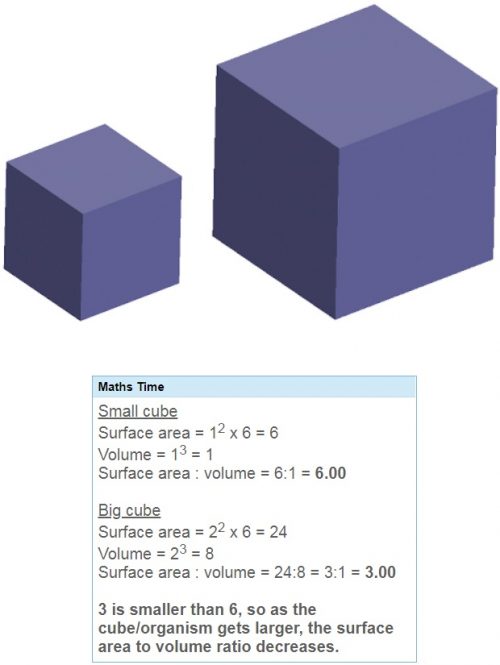
3 is smaller than 6, so as the cube/organism gets larger, the surface area to volume ratio decreases.
What adaptations do larger organisms have to cope with the large demand for substance and heat exchange?
What this basically means is that the larger an organism gets, the less surface area is available to serve its increasing needs due to its increasing volume. So what adaptations do larger organisms have to cope with the large demand for substance and heat exchange?
For one, mere diffusion directly into and out of the organism is not possible. Insects, for example, have a system of tubules which distribute air within the body so that it reaches all the different parts. Mammals have lungs…
